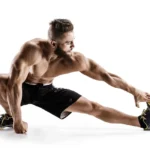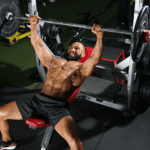Developing a strong, well-defined back is essential for aesthetics, posture, and overall upper body performance. Central to this goal are the latissimus dorsi muscles, or lats, which contribute significantly to the iconic V-shaped back. Regardless of your fitness level—whether a beginner, athlete, gym-goer, or home exerciser—incorporating the best lat exercises into your routine will improve strength, size, and posture. This comprehensive guide covers anatomy, benefits, exercises, recovery strategies, and sample routines to help you build a powerful and balanced back.
Understanding the Lats: Anatomy and Function
The latissimus dorsi are the broadest muscles in the back, spanning from the lower thoracic and lumbar spine, across the ribs, to the upper arm. Their primary functions include:
- Shoulder adduction: Bringing the arm down toward the body
- Shoulder extension: Moving the arm backward
- Internal rotation of the humerus: Rotating the upper arm inward
- Scapular stabilization: Supporting shoulder integrity during movements
Strong lats are essential not only for pulling movements like rows and pull-ups but also for maintaining proper posture, preventing injuries, and enhancing athletic performance. They work in tandem with other posterior chain muscles, including the trapezius, rhomboids, erector spinae, and glutes, to create strength and balance across the upper and lower back.
Secondary Keywords: posterior chain exercises for back, upper back and lat workouts
Benefits of Regular Lat Training
Improved Strength and Pulling Power
Strengthening your lats enhances pulling strength for activities such as lifting, climbing, rowing, and sports performance. Compound exercises like barbell rows, pull-ups, and T-bar rows develop both strength and endurance in the upper body.
Muscle Growth and Definition
Targeted lat training contributes to muscle hypertrophy, creating width and thickness for a more pronounced V-shaped back. Isolation and controlled contraction exercises, such as straight-arm pulldowns, further enhance muscle definition.
Better Posture and Shoulder Stability
Weak lats often contribute to rounded shoulders and poor posture. Consistent lat training strengthens the posterior chain, improves shoulder alignment, and prevents muscular imbalances.
Athletic Performance
Powerful lats are crucial for sports requiring pulling movements, sprinting, swimming, and climbing. Lat development supports improved biomechanics, force generation, and upper body stability.
Secondary Keywords: best lat exercises for strength, best lat exercises for size, best lat exercises for back definition
Equipment-Based Lat Exercises
Dumbbell Lat Exercises
Dumbbell exercises allow for independent arm movement, enhancing muscle symmetry and range of motion.
- Dumbbell Rows (Single-Arm & Bent-Over)
- Focus on controlled motion, full contraction at the top, and slow eccentric lowering.
- Dumbbell Pullovers
- Lying on a bench, pull the dumbbell from behind your head toward the chest, engaging lats fully.
- Tips for Success
- Keep a neutral spine and avoid jerky movements.
- Adjust weight to maintain proper form.
Secondary Keywords: best lat exercises with dumbbells
Barbell Lat Exercises
Barbell movements allow for heavy loading and progressive strength development.
- Barbell Rows (Pendlay & Yates)
- Pendlay rows: bar touches the floor on each rep for maximal strength
- Yates rows: underhand grip for better lat contraction
- T-Bar Rows
- Focuses on mid-back and lat thickness
- Maintain proper hinge and avoid arching the lower back
- Technique Tips
- Use full range of motion and controlled tempo
- Engage core to protect the spine
Secondary Keywords: best lat exercises with barbell
Cable Machine Lat Exercises
Cables provide constant tension through the range of motion, ideal for isolation and hypertrophy.
- Lat Pulldowns (Wide & Close Grip)
- Wide grip emphasizes outer lats
- Close grip emphasizes lower lats and mid-back
- Cable Rows
- Seated cable rows target mid-back and scapular retraction
- Benefits
- Smooth tension reduces risk of injury
- Adjustable resistance caters to all fitness levels
Secondary Keywords: best lat exercises on a cable machine
Resistance Band Lat Exercises
Resistance bands are excellent for home workouts and rehabilitation, offering progressive resistance without heavy weights.
- Band Pull-Aparts
- Strengthen lats and rear delts
- Band Lat Pulldowns
- Attach band overhead for pulldown motions
- Home-Friendly Options
- Great for beginners or travel workouts
Secondary Keywords: best lat exercises with resistance bands
Bodyweight and Functional Lat Exercises
Pull-Up Variations
Pull-ups remain the gold standard for lat development.
- Wide-Grip Pull-Ups: Maximizes outer lat engagement
- Chin-Ups: Underhand grip targets lower lats and biceps
- Neutral Grip Pull-Ups: Shoulder-friendly option for joint safety
Secondary Keywords: pull-up variations for lats, chin-up variations for lats
Pull-Up Alternatives
For those unable to perform full pull-ups, alternative exercises are effective:
- Inverted Rows – Using a bar or suspension trainer
- Towel Rows – Grip variation for at-home workouts
- Door-Frame Pull Exercises – Easy home option
Secondary Keywords: pull-up alternatives for lats, lat exercises without equipment
Home-Friendly Lat Exercises
Bodyweight exercises can strengthen lats without gym access:
- Bodyweight Rows Under Table
- Resistance Band Pull-Downs
Secondary Keywords: best lat exercises at home, bodyweight lat exercises
Lat-Focused Muscle Isolation Exercises
Isolation exercises allow targeted contraction for hypertrophy and definition.
- Straight-Arm Pulldowns – Emphasizes full lat stretch
- Single-Arm Cable Pulls – Corrects imbalances
- Key Points
- Slow eccentric motion
- Focus on full contraction
Secondary Keywords: isolation exercises for lats, lat pulldown alternatives, best exercises for V-shaped back, lat-focused compound exercises
Recovery, Mobility, and Injury Prevention
Lat Stretching Exercises
- Overhead Lat Stretch
- Doorway Stretch
Lat Mobility Drills
- Foam rolling for lats and upper back
- Shoulder dislocates with band or PVC pipe
Strengthening After Injury
- Light resistance band pulldowns
- Controlled range-of-motion exercises
Secondary Keywords: stretches for lats, lat mobility exercises, lat strengthening after injury
Lat Workouts for Specific Goals
For Strength
- Compound exercises like barbell rows, weighted pull-ups
- Focus on progressive overload
Secondary Keywords: best lat exercises for strength, lat-focused compound exercises
For Size and Aesthetics
- Isolation exercises and high-volume training
- Achieve V-shaped back through width and thickness
Secondary Keywords: best lat exercises for size, best exercises for V-shaped back
For Posture and Athletic Performance
- Pulling movements combined with mobility
- Shoulder stability and scapular retraction focus
Secondary Keywords: best lat exercises for posture, best lat exercises for athletes
Sample Lat Workout Routines
| Level | Exercises | Sets | Reps | Notes |
|---|---|---|---|---|
| Beginner | Dumbbell Rows, Bodyweight Pull-Ups, Band Lat Pulldowns | 3 | 12–15 | Focus on form and controlled motion |
| Intermediate | Barbell Rows, Wide-Grip Pull-Ups, Cable Lat Pulldowns | 4 | 10–12 | Moderate weight and resistance |
| Advanced | T-Bar Rows, Weighted Pull-Ups, Single-Arm Cable Pull | 5 | 8–10 | Progressive overload, controlled tempo |
Build a V-Taper: Best Back and Shoulder Workout for Size & Strength
Frequently Asked Questions (FAQ)
Q1: How often should I train my lats?
A: 2–3 times per week allows sufficient stimulus and recovery for growth and strength.
Q2: Can I grow my lats at home without equipment?
A: Yes, bodyweight rows and resistance band pulldowns are effective alternatives.
Q3: What’s the best exercise for a V-shaped back?
A: Wide-grip pull-ups and dumbbell/barbell rows maximize width and definition.
Q4: How do I prevent lat injuries?
A: Warm up properly, maintain form, gradually increase load, and include stretching and mobility drills.
Q5: Can lat training improve posture?
A: Strengthening lats and posterior chain muscles improves shoulder alignment and reduces rounded shoulders.
Tips for Maximizing Lat Workout Results
- Warm-Up: Dynamic stretches and light pull exercises
- Progressive Overload: Gradually increase resistance and volume
- Recovery: Foam rolling, stretching, adequate rest
- Nutrition: Support hypertrophy with protein-rich diet
- Avoid Common Mistakes: Poor form, neglecting mobility, overtraining
Conclusion
Building strong, defined lats is crucial for a V-shaped back, improved posture, and upper body strength. By incorporating dumbbell, barbell, cable, and bodyweight exercises into your routine, you can achieve a balanced, powerful back while minimizing injury risk.
Consult a certified trainer or fitness professional to personalize your lat training program and ensure proper form, intensity, and safety. Start today and take the first step toward a stronger, more defined back.










